 Olympic National Park
Olympic National Park
Olympic National Park, spanning nearly a million acres on Washington’s Olympic Peninsula, is a UNESCO World Heritage Site and Biosphere Reserve renowned for its diverse ecosystems, from rugged Pacific coastlines to temperate rainforests and glaciated peaks. Established as a national monument in 1909 by President Theodore Roosevelt and upgraded to a national park in 1938 by President Franklin Roosevelt, the park protects over 922,000 acres, including 73 miles of pristine coastline and the iconic Hoh Rain Forest, which receives up to 140 inches of rain annually. Home to ancient human history dating back 12,000 years, the park reflects the stewardship of indigenous tribes like the Quinault and Makah, alongside later European exploration. With no roads traversing its interior, the park’s 95% wilderness offers RVers a unique opportunity to explore diverse landscapes, from the alpine meadows of Hurricane Ridge to the moss-draped trails of the Quinault Rainforest, making it a bucket-list destination for nature lovers.
Three Unique Activities in Olympic National Park
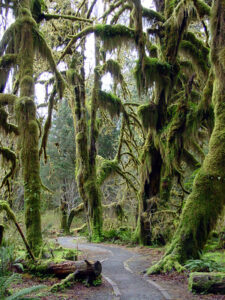 1. Hiking the Hall of Mosses Trail
1. Hiking the Hall of Mosses Trail
The Hall of Mosses Trail in the Hoh Rain Forest is a must-do for RVers visiting Olympic National Park, offering a 0.8-mile loop through one of the world’s few temperate rainforests. This easy, family-friendly trail immerses visitors in a lush, green world of towering Sitka spruce and western hemlock draped in vibrant mosses, with interpretive signs explaining the ecosystem’s unique biodiversity. The trailhead is accessible via Upper Hoh Road, about 19 miles from US-101, and features a small parking area suitable for smaller RVs or tow vehicles. The serene ambiance, with the gentle sound of the Hoh River nearby, provides a magical experience, especially in early morning when fog adds a mystical touch. RVers should arrive before 10:00 a.m. or after 5:00 p.m. to avoid parking delays, as the lot fills quickly in summer. This iconic hike is a perfect introduction to the park’s rainforest ecosystem.
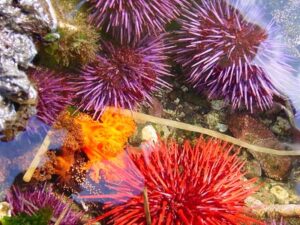 2. Tide Pooling at Rialto Beach
2. Tide Pooling at Rialto Beach
Rialto Beach, on the park’s Pacific coast, offers a unique tide pooling experience where RVers can explore vibrant marine life during low tide. Located near Mora Campground, this rugged beach features dramatic sea stacks, driftwood, and tidal pools teeming with starfish, anemones, and crabs. The National Park Service provides tide charts online to plan your visit, and sturdy shoes are recommended due to the rocky terrain. The 1.5-mile hike to the Hole-in-the-Wall, a natural rock arch, adds adventure to the experience, offering stunning ocean views. The beach’s wild, windswept ambiance is both invigorating and serene, with ample parking for RVs at the trailhead off Mora Road. RVers should check weather conditions, as fog and wind are common, and follow park guidelines to protect delicate marine ecosystems. This activity is a coastal highlight for nature enthusiasts.
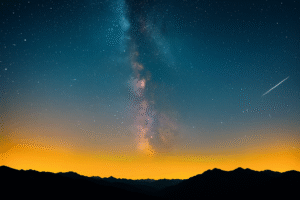 3. Hurricane Ridge Stargazing
3. Hurricane Ridge Stargazing
Hurricane Ridge, accessible via a 17-mile drive from Port Angeles, offers RVers a breathtaking stargazing experience at 5,242 feet elevation. Known for its panoramic views of the Olympic Mountains and Strait of Juan de Fuca, this alpine area becomes a celestial haven at night, with minimal light pollution revealing a dazzling night sky. The Hurricane Ridge Visitor Center provides parking suitable for smaller RVs, and rangers often host summer stargazing programs with telescopes. Visitors should bring warm clothing, as temperatures drop significantly at night, and check road conditions, as the winding access road can close due to weather. The serene, high-altitude setting and starry vistas make this a memorable activity for RVers seeking a cosmic connection with Olympic’s wilderness.
Three Restaurants in or Near Olympic National Park
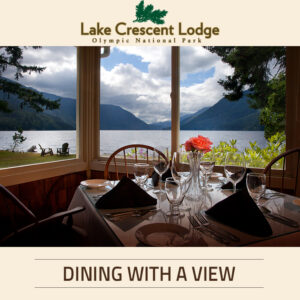 Lake Crescent Lodge Restaurant
Lake Crescent Lodge Restaurant
(Lake Crescent, Olympic National Park)
- Cuisine: American with a focus on locally sourced ingredients
- Ambiance: Nestled on the shores of Lake Crescent, the Lake Crescent Lodge Restaurant offers a rustic yet elegant dining experience with stunning lake and mountain views. The historic lodge, built in 1915, features warm wooden interiors, large windows, and a cozy fireplace, creating a welcoming atmosphere for RVers. The menu includes dishes like cedar-planked salmon, wild mushroom risotto, and seasonal salads, paired with local wines. The outdoor patio is ideal for summer dining, with a serene lakeside vibe. Reservations are recommended, especially during peak season, and the restaurant is accessible via US-101, about 20 miles west of Port Angeles.
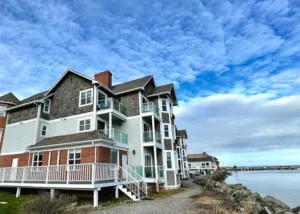 The Tides Inn
The Tides Inn
(Port Angeles, WA, ~20 miles from park entrance)
- Cuisine: Seafood and American comfort food
- Ambiance: Located in Port Angeles, a gateway to Olympic National Park, The Tides Inn offers a casual, nautical-themed dining experience with views of the Strait of Juan de Fuca. The bright, airy interior features maritime decor, and the friendly, laid-back vibe makes it a favorite among locals and visitors. The menu highlights fresh Pacific Northwest seafood, including Dungeness crab, clam chowder, and fish and chips, alongside burgers and steaks. Outdoor seating is available for enjoying sunny days. RVers can easily access the restaurant from US-101, with ample parking for larger vehicles nearby. It’s a great spot to refuel after a day of park exploration.
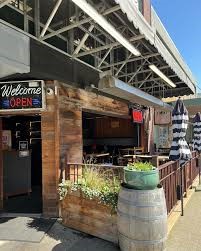 Next Door Gastropub
Next Door Gastropub
(Port Angeles, WA, ~20 miles from park entrance)
- Cuisine: American gastropub with craft beer focus
- Ambiance: Next Door Gastropub in downtown Port Angeles combines a vibrant, modern atmosphere with a cozy, community feel. The exposed brick walls, wooden tables, and local art create a trendy yet approachable setting, perfect for RVers seeking a lively meal. The menu features elevated pub fare like smoked brisket sandwiches, truffle fries, and vegan-friendly options, paired with an extensive selection of Pacific Northwest craft beers. The outdoor patio is pet-friendly, ideal for RVers traveling with dogs. Located just off US-101, the gastropub is easily accessible with street parking, though larger RVs may need to park in nearby lots. Reservations are suggested for peak times.
Three RV Parks in or Near Olympic National Park
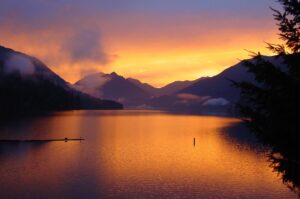 Fairholme Campground
Fairholme Campground
(Olympic National Park, ~30 miles from Port Angeles)
Fairholme Campground, located on the north shore of Lake Crescent within Olympic National Park, offers 84 campsites, including walk-in lakeside sites and one ADA-accessible site, set in an old-growth forest surrounded by steep mountains. The campground accommodates RVs up to 21 feet, with some sites fitting rigs up to 35 feet, but there are no hookups. Each site includes a campfire ring and picnic table, with food storage lockers at select sites to protect against wildlife. A water fill station and septic dump station (fee required) are available near the boat launch, and potable water is accessible at restrooms. The campground is open from May 23 to September 15, 2025, with reservations available six months in advance for B-loop sites via Recreation.gov. The steep, narrow roads and low branches require careful navigation for larger RVs, so check site details before booking. Amenities include flush toilets, but the nearest showers are at Bogachiel State Park (35 miles away). RVers can enjoy nearby hiking trails like the Spruce Railroad Trail and water activities on Lake Crescent, making this a scenic base for park exploration.
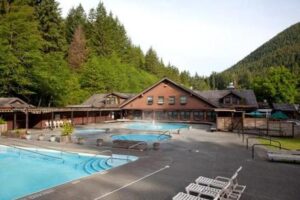 Sol Duc Hot Springs RV Park
Sol Duc Hot Springs RV Park
(Olympic National Park, ~40 miles from Port Angeles)
Sol Duc Hot Springs RV and Campground, a privately managed facility within Olympic National Park, offers 17 RV sites with water and electric hookups, ideal for RVers seeking more amenities. Located a quarter-mile from the Sol Duc Hot Springs Resort, the campground provides access to hot springs pools, a restaurant, poolside deli, and gift shop. The sites, accommodating RVs up to 35 feet, are set in a lush, forested area near the Sol Duc River, offering a tranquil setting with picnic tables and fire pits. An NPS-managed dump station is available nearby (fee required). Reservations can be made by calling 888-896-3818, and the campground operates from mid-March to late October. RVers should note that pets are allowed but must be leashed, and the campground’s proximity to hiking trails like the Sol Duc Falls makes it a prime spot for outdoor enthusiasts. The resort’s amenities enhance the camping experience, though sites offer limited privacy.
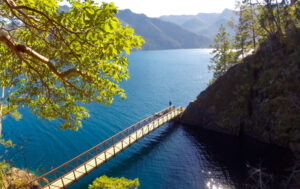 Olympic Peninsula/Port Angeles KOA
Olympic Peninsula/Port Angeles KOA
(Port Angeles, WA, ~15 miles from park entrance)
Situated just outside Olympic National Park, the Olympic Peninsula/Port Angeles KOA is a family-friendly campground surrounded by forests, glaciers, and lakes, offering a convenient base for exploring the park. The campground features dozens of RV sites with full hookups (30/50 amp, water, sewer) and pull-through options for larger rigs, along with amenities like a pool, hot tub, playground, dog park, bike rentals, and a convenience store. A dump station is available on-site for guest use. The campground’s location along US-101 provides easy access to Port Angeles’ historic downtown, the Olympic Game Farm, and park entrances like Hurricane Ridge. Open year-round, it’s pet-friendly (leashed pets only) and offers WiFi hotspots and laundry facilities. The mix of wooded and open sites caters to various RV sizes, and the campground’s extensive amenities make it ideal for families or RVers seeking comfort and convenience near the park.
Two RV Propane Fill-Up Stations Near Olympic National Park
1. Jim’s RV Service & Supply (Port Angeles, WA, ~20 miles from park entrance)
- Directions: From the Hurricane Ridge entrance (Port Angeles), head east on US-101 for about 5 miles into downtown Port Angeles. Turn left onto S Lincoln St, then right onto E 8th St. Jim’s RV Service & Supply is at 2614 E Hwy 101, Port Angeles, WA 98362, on the right.
- Details: Jim’s RV Service & Supply offers propane refills for RV tanks, catering to both ASME and DOT cylinders. Open Monday through Friday, 8:00 a.m. to 5:00 p.m., and Saturday, 9:00 a.m. to 1:00 p.m., the facility provides competitive pricing (call 360-452-7172 for current rates). The lot accommodates most RV sizes, but larger Class-A motorhomes should call ahead to ensure space. The station also offers RV parts and repair services, making it a one-stop shop for RVers. Staff are experienced in safe propane handling, and the location’s proximity to US-101 makes it a convenient stop en route to or from the park.
2. Swain’s General Store (Port Angeles, WA, ~20 miles from park entrance)
- Directions: From the Hurricane Ridge entrance, take US-101 E for 4.5 miles into Port Angeles. Turn left onto E Front St, then right onto N Laurel St. Swain’s General Store is at 602 E Front St, Port Angeles, WA 98362, on the left.
- Details: Swain’s General Store provides propane refills for RV tanks during store hours (Monday–Saturday, 8:00 a.m. to 7:00 p.m.; Sunday, 9:00 a.m. to 6:00 p.m.). The filling station is located in the parking lot, accessible for most RV sizes, though larger rigs should navigate carefully due to nearby traffic. Pricing is per gallon (call 360-452-2357 for rates), and staff ensure safe refills. The store offers camping supplies, groceries, and hardware, making it a practical stop for RVers. Check tide charts if heading to coastal park areas afterward, as refills are best done before exploring remote sections.
Two Dump Stations Near or in Olympic National Park
1. Fairholme Campground Dump Station (Olympic National Park, ~30 miles from Port Angeles)
- Directions: From the Hurricane Ridge entrance, take US-101 W for 22 miles toward Sappho. Turn left onto Camp David Jr Rd, then follow signs to Fairholme Campground at Lake Crescent, Port Angeles, WA 98363. The dump station is near the boat launch.
- Details: This NPS-managed dump station at Fairholme Campground is open from May to September, closing when overnight temperatures drop below freezing. It’s available for registered guests at no additional cost, with a $5 fee for non-guests (payable at the campground entrance). The station supports gray and black water dumping, with a water fill station nearby for rinsing. RVers should bring their own hoses and ensure tanks are sealed to prevent spills. The site accommodates most RV sizes, but narrow roads require caution. Check Recreation.gov for seasonal updates, as the station may close early due to weather.
2. Kalaloch Campground Dump Station (Olympic National Park, ~80 miles from Port Angeles)
- Directions: From the Hurricane Ridge entrance, take US-101 W for approximately 75 miles toward Kalaloch. Turn left onto Kalaloch Campground Rd, following signs to the campground at Kalaloch Beach, Forks, WA 98331. The dump station is near the campground entrance.
- Details: The Kalaloch Campground dump station, managed by the NPS, is open year-round and available for registered guests at no cost, with a $10 fee for non-guests. It supports both gray and black water dumping, with potable water available for rinsing. The station is RV-friendly, accommodating rigs up to 35 feet, though larger vehicles should check site details on Recreation.gov. RVers must follow park regulations for proper waste disposal and avoid parking on vegetation. The coastal location offers easy access to nearby beaches, but check road conditions in winter, as US-101 can be affected by weather. Call 360-565-3130 for updates.
Two Books About Olympic National Park’s History
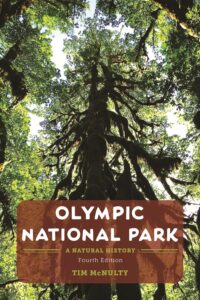 1. Olympic National Park: A Natural History by Tim McNulty
1. Olympic National Park: A Natural History by Tim McNulty
- Summary: Published in 2018, Olympic National Park: A Natural History by Tim McNulty is an authoritative guide to the park’s ecological and human history. The book traces the park’s origins to the geologic forces that shaped the Olympic Peninsula, from its tectonic uplift to the carving of its valleys by glaciers. McNulty details the park’s 12,000-year human history, beginning with indigenous tribes like the Quinault, Makah, and Klallam, who relied on the land’s resources for fishing, hunting, and gathering. It explores the arrival of European explorers in the 18th century, the establishment of the park as a national monument in 1909, and its designation as a national park in 1938, highlighting the conservation efforts of figures like Theodore and Franklin Roosevelt. The book also covers the park’s diverse ecosystems—rainforests, alpine meadows, and coastal zones—with vivid descriptions of flora and fauna, such as Roosevelt elk and Olympic marmots. Enhanced with maps and photographs, this book is a compelling resource for RVers seeking to understand the park’s natural and cultural legacy.
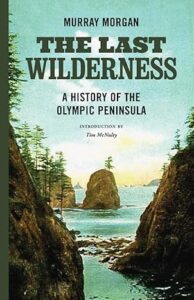 2. The Wilderness: A History of the Olympic Peninsula by Murray Morgan
2. The Wilderness: A History of the Olympic Peninsula by Murray Morgan
Murray Morgan’s classic history of the Olympic Peninsula, originally published in 1955, evokes a remote American wilderness “as large as the state of Massachusetts, more rugged than the Rockies, its lowlands blanketed by a cool jungle of fir and pine and cedar, its peaks bearing hundreds of miles of living ice that gave rise to swift rivers alive with giant salmon.”
Drawing on historical research and personal tales collected from docks, forest trails, and waterways, Morgan recounts vivid adventures of the area’s settlers―loggers, hunters, prospectors, homesteaders, utopianists, murderers, profit-seekers, conservationists, Wobblies, and bureaucrats―alongside stories of coastal first peoples and striking descriptions of the peninsula’s wildlife and land.
Freshly redesigned and with a new introduction by poet and environmentalist Tim McNulty, this humor-filled saga and landmark love story of one of the most formidably beautiful regions of the Pacific Northwest will inform and engage a new generation of readers.
